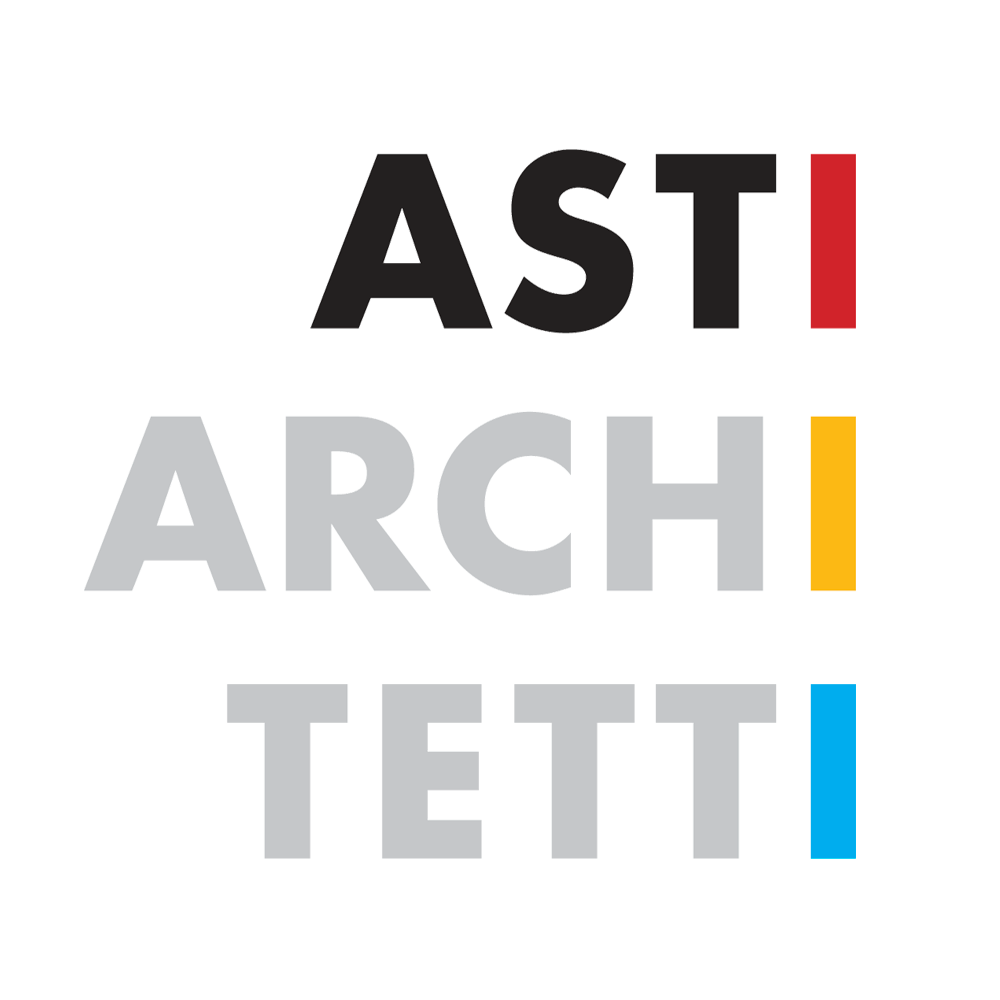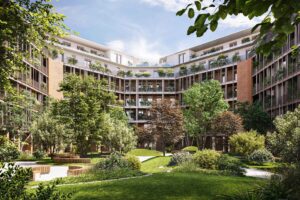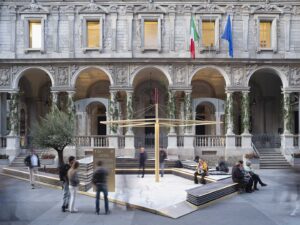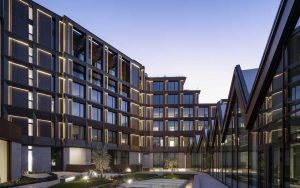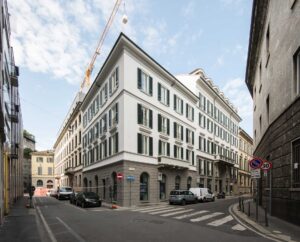FARAVELLI 14
Asti Architetti converts the large building between Via Faravelli and Via Val Vigezzo to residential use with the design of a new façade and a large courtyard-park
Faravelli 14 is located on the corner of Via Faravelli and Via Val Vigezzo in the north-west of the city of Milan and within the area known as “Portello”.
The pre-existing building was an industrial construction dating back to 1948, which was expanded in 1967 with the addition of the building in the courtyard.
In the early 1990s, the building changed its use to offices, the volume and internal distribution were increased, and the façades were modernised with marble cladding and darkened aluminium window frames.
The area, once industrial, is now characterised by major urban redevelopment with a residential vocation: rich in services and infrastructures of all kinds, it is located near Piazza Firenze and the important city thoroughfare of Corso Sempione.
We have sought to understand what the needs of the area were in order to define the architecture of the building that would best interpret the relationship with the street in that continuous and uninterrupted way typical of Lombard cities. On an urban planning level, we started by enhancing the characteristics of the area, the great perspective towards Citylife, Paolo Asti explains.
The building consists of two bodies, one L-shaped to close the corner on the street, and the other inside the courtyard along the longest side, interconnected to form a courtyard; it has four floors above ground and two basement floors.
The project by Asti Architetti has totally transformed the building, owned by Nexity Holding Italia, into a residence, creating 78 residential units, ranging in size from small, approximately 40 square metres, to approximately 195 square metres.
This work, in addition to significantly improving the building’s energy performance, has provided greater transparency, both to the outside and to the inside thanks to new terraces with a depth of about 2 m overlooking the courtyard, which has been transformed into a large garden.
The ground junction, which is easily recognisable through glazing, allows visibility of the green courtyard, which I would describe as “almost park-like” inside. In this inner courtyard there is a more public but protected part compared to the rest of the city, Paolo Asti explains.
The outer image of the building, which Asti Architetti gave back to the city, is that of a contemporary residential complex with large glazed surfaces set in a regular mesh of beams and pillars overlapping the façade and interacting with the levels and sliding shutter elements that are arranged in a heterogeneous manner to achieve interesting plastic effects of solids and voids.
We had in mind a system of successive layers of facades that would soften the approach from the city to the flat, to form a real “cocoon”. Flats in Milan are increasingly conceived as shelters, as nests.
This conceptual approach is altogether “romantic” as it combines efficiency with humanity, with the awareness that we were making houses for people, and leave plenty of room for flat customisation, without going into too much design.
Light is another of the elements I was asked to enhance, natural light I mean: all the flats, with the aim that the relationship with the surroundings should be as happy as possible, have been arranged in different ways in order to make the most of the natural lighting, Paolo Asti points out.
Ownership: NEXITY HOLDING ITALIA S.R.L
